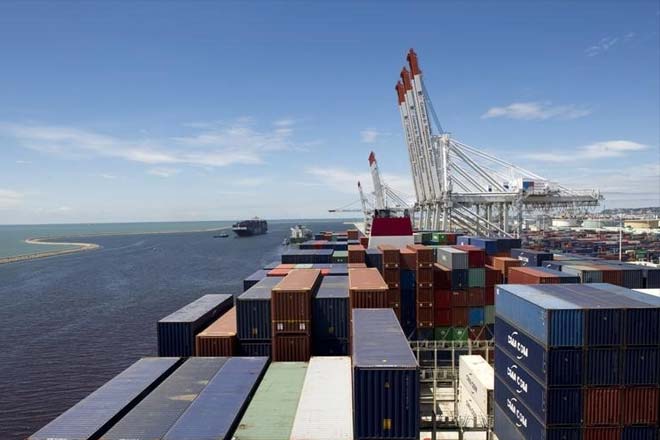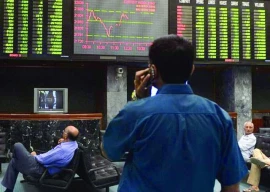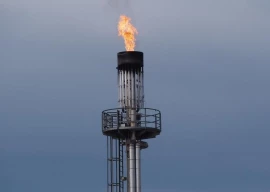
The meagre foreign currency reserves at that time and limited sources of foreign currency inflows to maintain exchange rate stability required the government to impose policies to reduce the current account deficit.
The trade deficit constitutes a significant proportion of the current account deficit. Although the immediate impact was mainly undesirable as it contributed to price inflation and shortages, the government became successful in curtailing the trade deficit. This consequently eased the pressure on the foreign exchange reserves and resulted in exchange rate stability. Measures including depreciation of the overvalued rupee, subsidised exports and restriction on imports all combined to reduce the trade deficit.
With the trade deficit narrowing to desired levels, the focus should now shift to prioritising export growth through improving the quality of local production by fostering innovation and competition. This may require exporters to have easier access to inputs, both domestically produced as well as imported variants.
The cumulative trade deficit from July to November 2019 – first five months of FY20, as reported by the Pakistan Bureau of Statistics (PBS), was 33% lower in dollar terms than the value reported for the same period of previous year. Imports declined 18.41% while exports increased 4.79%.
The trade deficit in November 2019 was 29.65% lower than the deficit reported in November 2018. Imports decreased 13.99% and exports increased 9.35%. This growth in exports has to become sustainable as the future policies seeking reduction in the trade deficit must be export-focused rather than forcing compression of imports.
A closer look at the export values reported for the first five months of FY20 indicates that the food group and textile group have performed relatively better than other major groups.
Food-group exports increased 16.20% over the same period of previous fiscal year, mostly driven by strong numbers for rice, fish and fish preparations as well as meat and meat preparations.
Exports of the textile group increased 4.68%, with knitwear, bedwear and readymade garments the most significant contributors. The three aforementioned products added $286 million to the growth of $436 million in the export value for first five months of FY20 relative to the value reported for the same period of previous fiscal year.
On the other hand, the growth in exports of raw cotton and cotton yarn was marginally positive. Exports of leather manufactures as well as surgical goods and medical instruments increased approximately 10%. Exports of tanned leather decreased 18.78%.
The emphasis on exports of processed goods indicates the increasing potential of value addition in industries in Pakistan.
Import slowdown
Considering the imports, there has been a decline across all major groups between July and November 2019 over the same period of last year. The largest decline was reported for the transport group, where imports decreased 41.91% or approximately $540 million.
Imports of completely built units (CBUs) decreased more than 73%, with arrivals almost coming to a halt. Imports of raw cotton and synthetic fibre also declined, and so were imports of manufactured fertiliser.
On the other hand, imports of electrical equipment and apparatus as well as imports of telecommunication equipment increased. These products also showed a significant growth in the values reported for November 2019.
Although the latter can be explained by an increase in documentation requirements for mobile phone imports, the rise in imports of electrical equipment and apparatus is a positive change if such imports are contributing to improvement in the productive capacity of industries.
The index for the production of large-scale manufacturing items from July to October FY20 indicates a decrease of 6.48%.
However, there is a slight uptick in the production of textile products as it recovers from negative growth in the previous fiscal year and a relatively strong recovery in the leather industry. These changes are reflected in the export figures.
Interestingly, the domestic production of fertiliser has also increased while its imports have declined.
Furthermore, according to data reported by the State Bank of Pakistan, period-to-period growth rate of export receipts is positive for all months in the current fiscal year.
The period-to-period growth rate of import payments is negative since February 2019, with absolute values above 20% for all months in the current fiscal year.
The intensity in the fall of import payments and the rise in export receipts suggest that the policies adopted to compress imports and boost exports have had some success this fiscal year. However, the important piece of the puzzle is to ensure that the export growth is sustainable and the growth continues at desirable levels. The sustainability may require exporters to access better-quality inputs, which should involve stronger export-import linkages.
Revised free trade deal
Pakistan has recently amended the Pakistan-China Free Trade Agreement to boost exports to Beijing. Exports from Pakistan to China are currently restricted to a few products. More than 40% of exports comprised cotton yarn.
Negotiations have included 313 products that will receive immediate tariff relief from China. On the other hand, China will also receive concessions from Pakistan on raw material, intermediate goods and machinery.
Pakistan should establish value chains with Chinese producers with the aid of these concessions, particularly in industries where investors can realise immediate advantage. Pakistan should also promote its export linkages in its more established markets in order to boost exports of value-added products.
Therefore, it is also critical that the benefits provided under the GSP Plus scheme, awarded by the EU, are better utilised and Pakistan must participate in the global and regional value chains.
As 2020 heralds a new dawn, the focus must shift towards trade policies that support export growth and promote participation in the global and regional value chains and away from taking restrictive measures to limit imports.
The writer is the Assistant Professor of Economics and Research Fellow at CBER, IBA
Published in The Express Tribune, December 30th, 2019.
Like Business on Facebook, follow @TribuneBiz on Twitter to stay informed and join in the conversation.























COMMENTS
Comments are moderated and generally will be posted if they are on-topic and not abusive.
For more information, please see our Comments FAQ